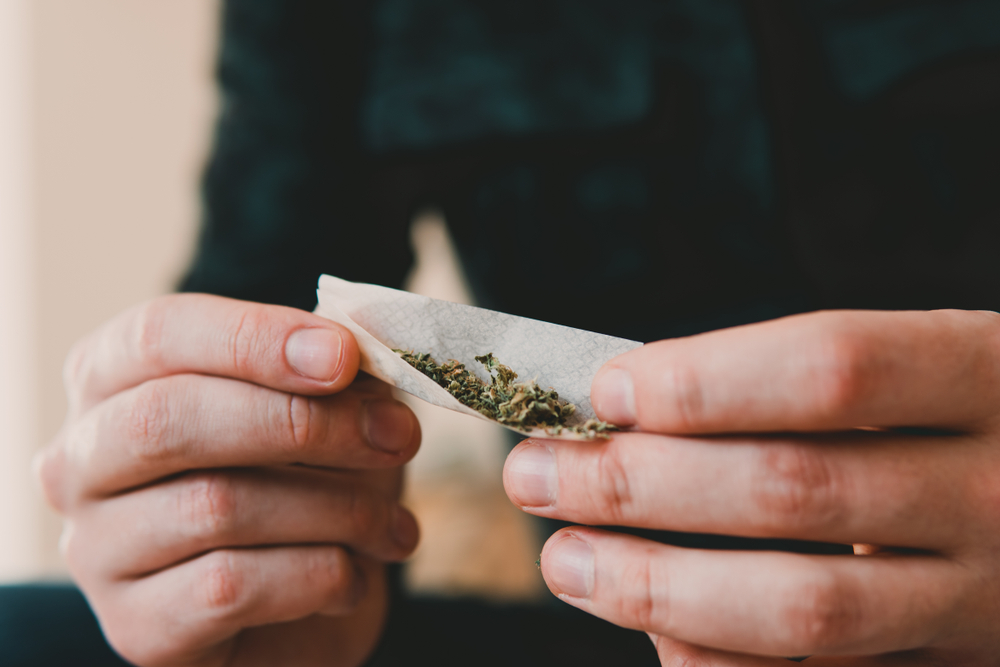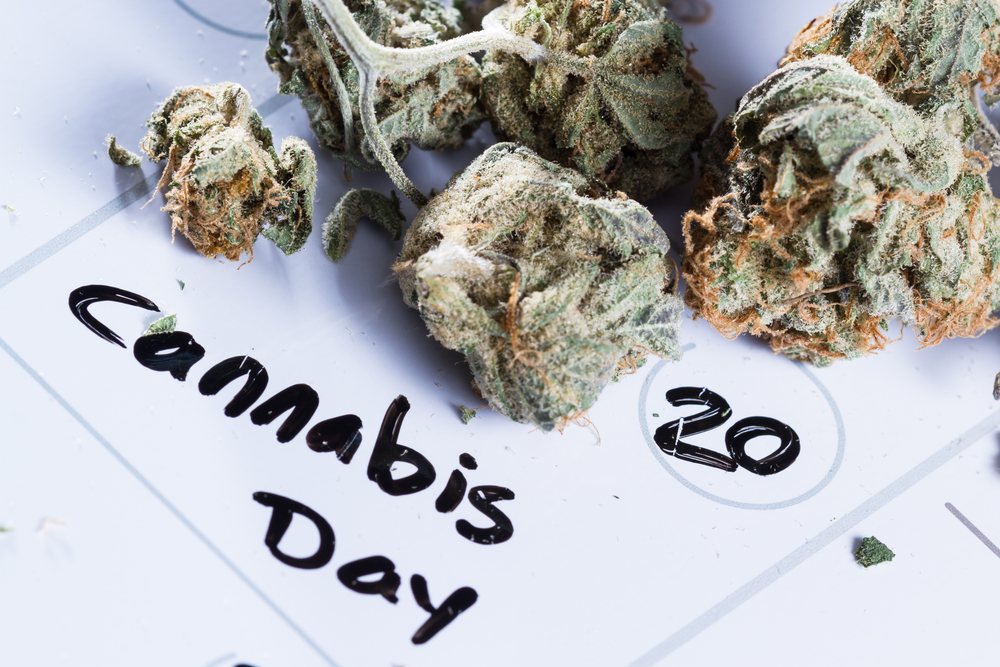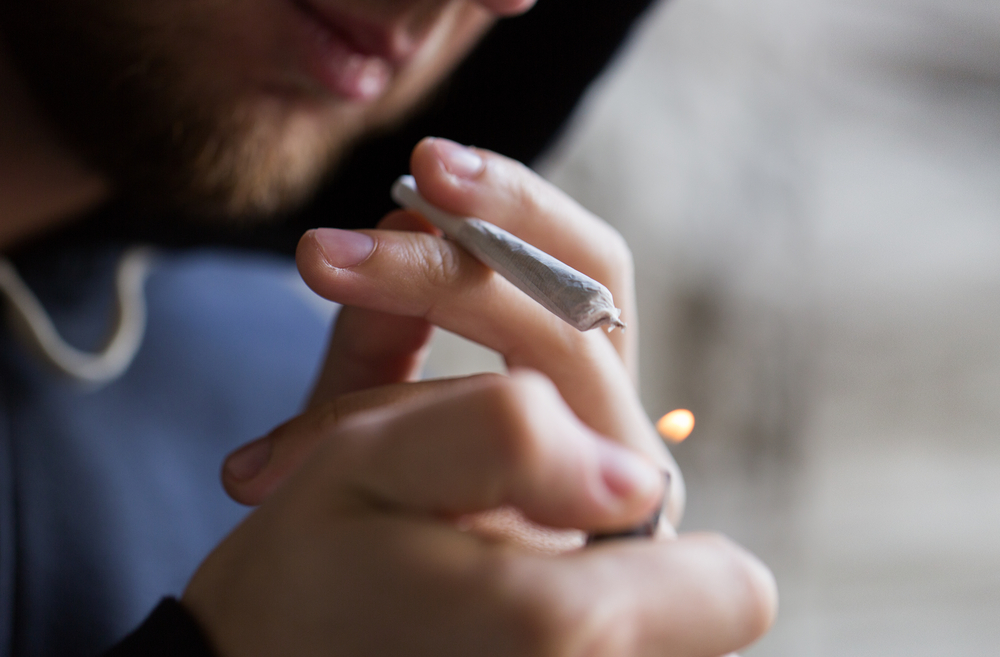Regarding addiction, cannabis is typically overlooked as a less severe substance, but learning how to quit smoking weed can be a valuable skill set for keeping your tolerance levels and perspectives surrounding dependency in check.
That said, over-consumption of weed can lead to some unhealthy habits that you’re best to avoid if you want to maintain a more responsible relationship with bud.
If it’s time for some cannabis abstinence, whether it’s to readjust your tolerance level or to reevaluate your relationship with reefer, there are a few things to keep in mind. Taking the necessary initial steps to prepare yourself to quit smoking weed will help you through the process.
Today, we’re breaking down the most effective methods for quitting weed, whether it be temporarily or permanently.
Without further ado, let’s get into it.
Determine Your Reason for Quitting Smoking Weed
Arguably the greatest influential factor in someone’s success in quitting weed is understanding why they want to stop using it in the first place. Without a genuine desire or need to, the plan may be doomed from the start.
Taking a step back and reflecting on any substance use requires a deeper understanding of the intention and reason behind why you’re doing it. Ask yourself, why do you feel the need to quit smoking weed? Is it perhaps simply a matter of taking a tolerance break, or do you feel that you have become psychologically dependent on it to function?
If smoking is the only way you can fall or stay asleep, stimulate your appetite, or serves as the most relevant avenue to feel “normal,” it’s probably time to take a break and reevaluate your relationship with weed moving forward.
Ensure that once you’ve made up your mind to quit marijuana and have your reason to, write everything you can down and read it often. This reminder will infuse emotion and repetition into the process and make it easier to quit using marijuana by having your own personal record of holding yourself accountable.
That said, we won’t shy away from the truth. Quitting cannabis cold turkey can be easier said than done. There are some elements to mentally prepare yourself to ensure that your efforts are successful, the first being the potential withdrawal symptoms you may potentially experience.
Quitting Smoking Weed & Weed Withdrawal

One of the most common situations you’ll encounter when learning how to quit smoking weed is the inevitable withdrawal that sets in if you’re a frequent, smoke weed everyday, type of user. So, before we dive into how to quit smoking weed, let’s take a look at some of the withdrawal symptoms you may face when you stop smoking marijuana.
These symptoms can range from mild to severe, depending on the frequency of use. So, while less frequent users may hardly feel the symptoms, stopping marijuana use can still cause varying levels of discomfort.
The following are the most common cannabis withdrawal symptoms:
- Irritability
- Nervousness/Anxiety
- Insomnia
- Loss of Appetite
- Depressed mood
- Restlessness
- Physical Discomfort (abdominal pain, nausea, fever, headache, sweating chills, etc.)
Light marijuana users may notice some irritability, headaches and fluctuations in their appetites. Some users relate it as being similar to coffee or caffeine withdrawal.
However, heavy cannabis users(those who consume 1.5+ grams per day) are more likely to experience heavier side effects such as insomnia, depression and anxiety. Luckily, these effects are temporary, lasting roughly a week or two after full abstinence.
That said, they may be present for upwards of a month in more frequent cannabis users.
Getting Started
Setting yourself up for success is essential. The first step in the quitting smoking weed journey is making it as hard as possible to fail. Oftentimes, this means picking a realistic approach for quitting.
Going from heavy usage to cold turkey may seem like a great idea, but is it doable if you’ve been smoking weed everyday for an extended period of time? Maybe not, and that’s okay. The thing with quitting weed is that there is no one-size-fits-all solution. This process is subjective to the individual user.
That said, you do ultimately have to get the ball rolling. Below we’ll outline some methods to make the initial first steps a bit easier to handle.
Get Rid of Your Gear
If you want to stop cannabis use long-term, then it’s going to be essential to get rid of – or at least hide from view and tuck away – anything that may trigger an inkling to smoke weed.
If your house has cannabis decor on the wall, bongs and weed pipes in every cabinet and a coffee table littered with rolling papers, stems and an ashtray, you’re just making it harder on yourself. Whether it’s the middle of winter or the end of summer, it’s time for some spring cleaning.
The most productive incentive to ensure success is to create a space that’s not conducive to weed use. Once you’ve done that, your job will be that much easier.
Reducing Marijuana Use Gradually
Depending on your usage frequency, the safest and easiest method for quitting cannabis may be to taper off and reduce your use gradually rather than quitting cold turkey all at once.
Slowly weaning yourself off may actually serve to give you a better shot at long-term success and cause the withdrawal symptoms to be milder over time. Trying to quit weed is a lot easier when you’re not constantly irritable or losing sleep.
The first step is to decide when you want to begin cutting back and select a definitive quitting date to work back from.
Pick a Start and End Date

Piggybacking off the previous point, select a start date that you feel comfortable with and know you can commit to. This will likely vary depending on your current consumption.
For frequent users, set a path that will taper your everyday use to nil over 2 to 4 weeks. This can include reducing the number of times per day, or first reducing the amount during the daily sessions, and then all together. Lighter users may benefit from a shorter timetable, such as a week.
Remember the old homage: slow and steady wins the race. Quitting weed is a marathon, not a sprint.
Quitting Smoking Weed Cold Turkey
Quitting weed cold turkey can be more challenging than one might initially think. However, there are several potential reasons for doing so, such as drug testing at work, preserving and improving mental health, practicing usage discipline, or resetting your tolerance level.
If this is the path you’ve chosen, then adhering to the steps above and incorporating all the tips and steps for stopping marijuana use is crucial.
Odds are you will face at least a couple of marijuana withdrawal symptoms. These symptoms may trigger a desire to give up and go back to using weed, particularly in users who turn to it as a comfortable and familiar coping mechanism.
However, you have to remember that that would be counterproductive, that the symptoms are temporary, and remember why you’re conducting the quitting process in the first place.
Tips for How to Quit Smoking Weed
Like we’ve said, there is no one universal solution for quitting weed. Different methods will work for different users. With this in mind, we have compiled a list of potential tips and tricks to help make the process a bit less brutal and promote the strongest likelihood for overall success.
Fill the Void

Starting new habits requires us to fill the time previously inhabited by our vice. In this way, filling the void with healthier habits and activities can be an incredibly effective way to occupy your mind with something else and engage your body and brain in other, more productive ways.
Depending on your schedule and how often you used cannabis, these activities can range from filling minutes to several hours of the day.
The following activities are easy to include in your daily routine.
- Exercise
- Arts and crafts
- Writing/Journaling
- Start a new TV show
- Pick up an instrument
- Going for a walk
- Reading
- Listening to music
- Learning a new language
- Spending more time with family and friends
This list is limitless. Pick whatever you feel and believe would work best for you!
Particularly with exercise, staying active can help release natural feel-good endorphins, and sweating actually helps release toxins from your body! Great activities to help you quit smoking weed altogether, right?
Document Your Journey
Speaking of being held accountable, being mindful of every step of the quitting process brings more awareness to your triggers, stresses and successes.
Did you find that watching a comedy show made you want to smoke? Write that down. Does going for a run after breakfast curb withdrawals and make you feel happy? Write it down!
Instilling the practice of documenting your journey day by day grants the opportunity for examining what worked, what didn’t and how to get better at adapting to your new lifestyle. Keep a journal and document everything you can to help yourself quit smoking weed.
As well, don’t forget to review often and intently! Pairing this method with an external support system allows you to track your progress and look back on how far you’ve come.
Seek out CBD-Only Products

If you opt to take the gradually reducing your intake route, CBD products are well-worth considering. While it may seem counterproductive to utilize something still associated with cannabis plants, CBD does not produce any of the psychoactive effects that standard THC does.
In other words, it doesn’t supply the typical ‘high’ you’re trying to avoid.
Instead, CBD supplies a wide range of beneficial and therapeutic benefits that can help ease the severity of withdrawal effects, such as relieving anxiety and physical discomfort symptoms, including pain, nausea, and insomnia.
Maintain a Healthy Diet
Even if you’re doing well with avoiding weed, it can be just as easy to replace it with a different vice. In many instances, users turn to junk food as a source of comfort, even though it can likely lead to them feeling physically worse.
In fact, junk food can help further facilitate feelings of fatigue, tiredness and irritability.
Ensuring that your body remains full of healthy and nutritious foods is a simple and straightforward way to help make yourself feel better from the inside out.
So, adhere to the rules that we were taught as kids and be sure to get your daily doses of healthy fruits, veggies and lean proteins to ensure that your energy levels stay up.
Ask for Help
Feeling overwhelmed at the prospect of confronting your marijuana dependency is entirely normal, and going at it alone places additional pressure on yourself that could best be directed elsewhere.
To that end, if you know of particular individuals that encourage or enable your cannabis use, try to put some distance between you and them to avoid any negative influences that may cause you to slip up. Instead, reach out to the friends, family members or loved ones you’re comfortable approaching and let them know if you are struggling.
Establishing a robust support system is crucial for facilitating success and ensuring that other people hold you accountable while championing your journey. Suppose you’re finding it difficult to locate someone you can lean on. In that case, there is a wealth of real-life and digital communities catered towards weed addiction and, more specifically, how to quit weed.
It may also be incredibly beneficial to speak to a therapist or psychologist to develop long-lasting coping mechanisms and delve into the reasons behind your usage to help establish a healthier relationship with cannabis.
Quitting Smoking Weed is a Lifestyle Change
Establishing a healthy relationship with marijuana, or any other substance for that matter comes in many shapes and sizes. When it comes to cannabis, specifically, there is no one-fix cure. In other words, what works for you might not necessarily work for someone else, and that’s okay!
There are also numerous reasons why someone wants to quit smoking weed, all of which are also entirely valid. It could be as simple as wanting to take a tolerance break to get one’s levels back to a more acceptable range.
In other instances, it could require a bit more introspection to determine the reasons behind using weed and whether it is a psychological dependency or coping mechanism. Whatever the source or inspiration, there’s no harm to come from taking a step back, reevaluating, and working towards establishing a healthier relationship with cannabis.
That said, there are methods that users attest to being helpful and making the transition to quitting weed, whether permanently or temporarily, easier.
We hope our tips provide some help, comfort and context into quitting cannabis.
Stay healthy, and good luck!


 No products in the cart.
No products in the cart.